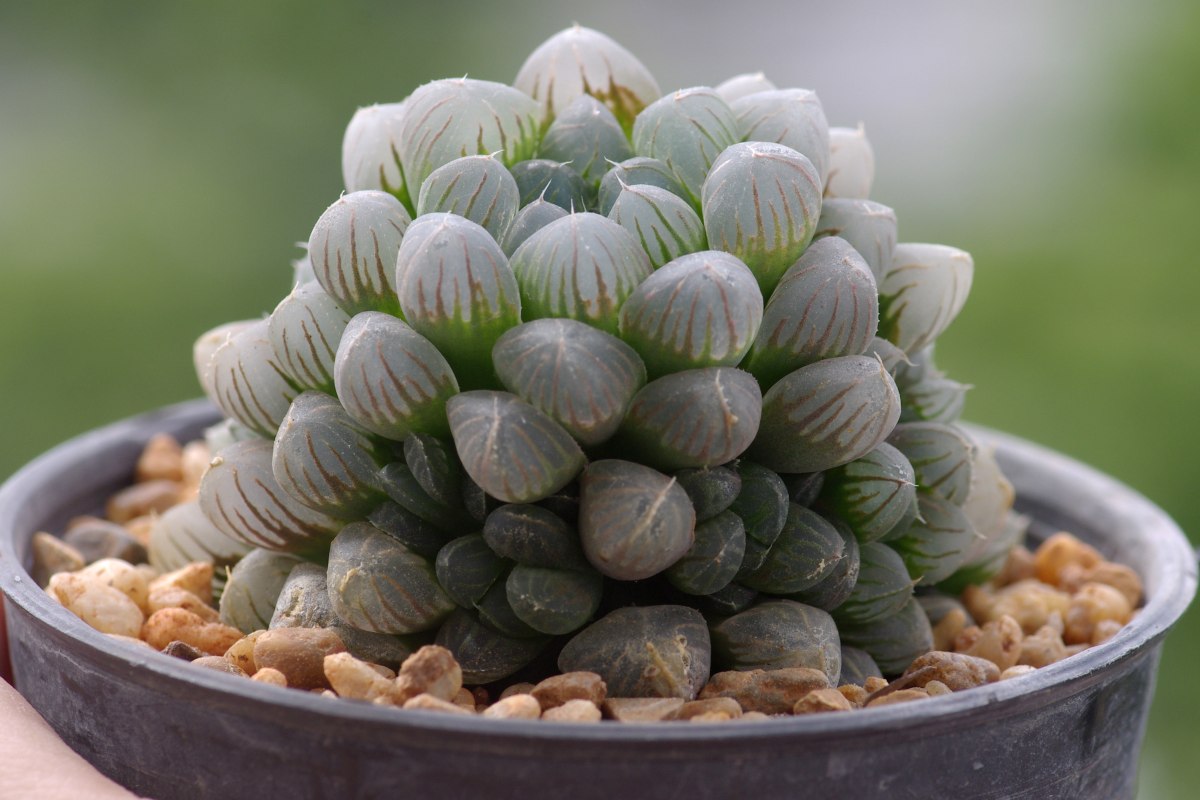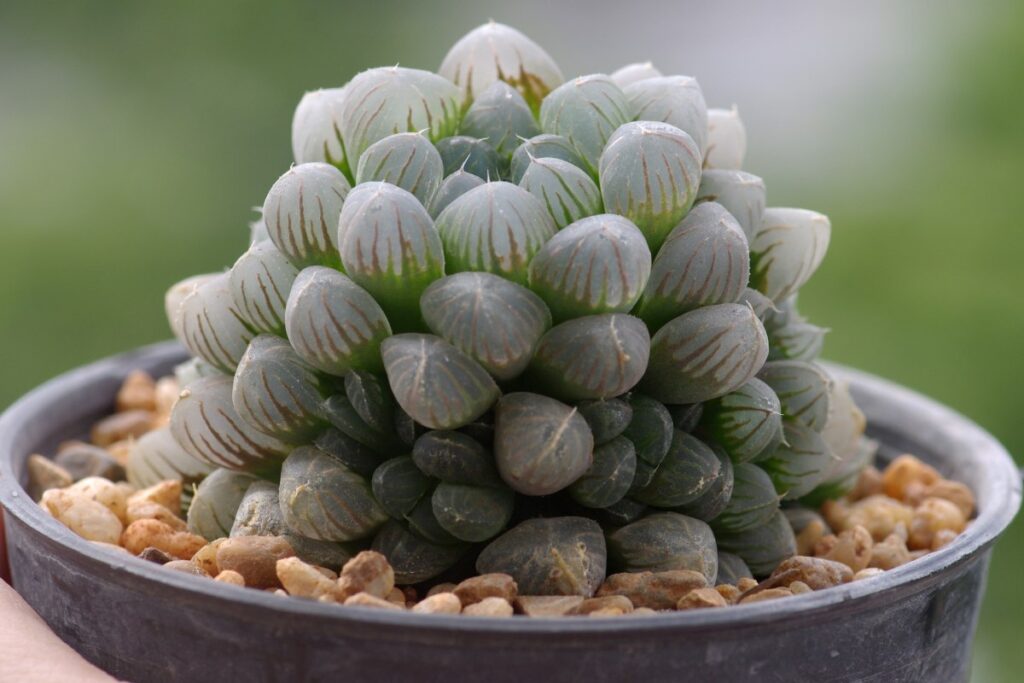Haworthia Cooperi Care: How to Grow & Care For The Cushion Aloe Plant
Let’s face it—not every gardening enthusiast would love to grow an overly sized houseplant. Most first-timers often opt for compact ones since they’re much easier to care for. And that’s why a good number of Haworthia varieties usually have a pretty decent space reserved for them in most gardening stores.
The Haworthia Cooperi is a densely-packed succulent that many gardeners choose to adopt due to its aptness to mutate to all kinds of conditions. It’s a variegated species with quite a bunch of attributes that you can’t fail to notice. In this guide, we’ll go in-depth on how to grow and maintain the Cushion Aloe plant without having to sign up for any online gardening masterclass. Read on to find out all it takes to keep your Haworthia Cooperi robust and fussy throughout the seasons.
More About The Cushion Aloe Plant
This miniature succulent is natively from South Africa—precisely the entire region of Eastern Cape Province. Most gardeners fancy adding this houseplant to their collection for its lengthy mileage to adapt to all sorts of conditions and natural translucent appearance. The leaves are usually fleshy and hardly wither even under neglect. This varied cultivar belongs to the Asphodelaceae family and comes with fewer demands, so be sure that you won’t drain so much energy into nurturing it all the way to its maturity stage. Another stunning feature about this succulent is the leaves form a rosette pattern especially if you grow it in sandy soil. The leaves usually grow in a spherical or triangular-like shape, depending on the kind of cultivar you’re looking to purchase. Other names it commonly goes by are:
- Star window plant
- Window Haworthia
- Pearl plant
- Zebra cactus
- Cooper’s Haworthia
How Big Does It Grow?
Under typical growing conditions, your Cushion Aloe plant will grow up to 2″ inches tall. In other instances, your Haworthia succulent might attempt to reach 4 inches, but that would be possible if you’re optimally giving it all the basic nurturing requirements it needs. And when it’s summer, this succulent will bloom a few flowers which are supported by peduncles that measure about 12″ inches long. But these flowers are usually insignificant since they’re tiny and don’t produce any scent. It has short stems that sprout a few variegates leaves which spread across the base of the growing medium. Since the stems of this plant are transparent, light passes through quite easily, making the foliage have a radiant look.
Other Graceful Varieties
The Haworthia cooperi has about 13 species. But we’ll narrow down to the most popular and alluring ones. So here are a few other options that you might highly likely want to consider:
- Haworthia cooperi var. Venusta- You’ll probably want to grow this variety for its sharp and fluffy tips which add a fine level of detail to the entire rosette pattern. The leaves are a bit pale, compared to the Cushion Aloe, but they’re constantly gray-green and usually have some soft whitish-hair, no matter the season.
- Haworthia cooperi var. Trucanta- What you might like about this variety is its pleasing capacity to yield leaves that take the shape of balloons and grow in huge clusters quite profoundly. The leaves resemble grapes and appear translucent from all angles.
- Haworhia cooperi var. Dielsiana-Same as the Trucanta variety, this breed usually has globular leaves that are pale-green and survive harsh conditions. It’s, however, a slow-growing plant.
- Haworthia cooperi var. Picturata-The leaves of this plant have sharp tips, are yellow-green, and appear swollen most of the time. This attribute makes the Picturata have a spherical shape as it ages.
Haworthia Cooperi Care Tips
Light & Temperature
Too much direct light will definitely hurt your Cushion Aloe. You, therefore want to filter the UV rays, by placing the growing medium on a windowsill that’s facing east or west. This would allow it to get at least 4 hours of bright light every day, especially during summer and spring. Use some curtain sheers to block excess light from damaging your plant’s radiant look. Haworthias have natively been growing underground, for the most part of their lives. Where it comes from, this plant grows under the shade of trees and rocks. Besides the tips of the leaves that sprout from the ground, other parts of this plant aren’t used to too much light access.
A huge chunk of this plant’s foliage hides beneath the soil level to keep itself from direct UV rays, so you want to be a little careful when it comes to the light conditions. You also want to keep the growing medium somewhere with modest humidity levels. During summer, your Cushion Aloe would enjoy warm temperatures, but that’s not to say it can’t survive under frosting conditions too. In fact, it can do well even when the temperatures fall below 10°C.
You, however, need to note that if the temperatures fall below 4°C, this would make the growth hormones quite repulsive. But for optimal results, it’s ideal to grow it somewhere with room temperatures that range between 20 to 30°C. This helps it maintain its transparent look all through the growing seasons.
Soil & Transplanting
While planting your Cushion Aloe, you need to consider using potting soil that drains water quite fast. Succulents store their own water to beat the dry period, so you want to use soil that’s porous—preferably sand and grow your plant in a pot with a few drainage holes. If the soil is waterlogged for long hours, that would damage your plant’s rooting system which holds the capacity to absorb nutrients. To sort out this drainage technicality, amend your plant’s potting soil with gravel, perlite, or pumice.
Topdressing the soil for your Haworthia cooperi with organic compost also helps boost the rate at which water drains. It’s equally essential to amend your organic potting soil with crushed tree barks, charcoal, or peebles, especially if you’re looking to grow cacti plants or succulents. If you grow your Cushion Aloe in a medium-sized container, you’ll hardly find any excuse to transplant it into a bigger pot. Most Haworthias are slow-growing plants, so they rarely outgrow their initial pots.
Watering & Fertilizer
As is the case with other cacti plants and succulents, it’s no secret that your Cushion Aloe won’t do well with lots of watering sessions. You only need to water it evenly during summer but need to give the soil some grace period to dry completely. When the temperatures are freezing, downsize the number of waterings. The growth hormones tend to go on a resting spree during this phase. Make sure the rosette doesn’t get into contact with water since it might begin to rot. To keep the leaves thick and fleshy, you might want to use an all-purpose fertilizer, ideally during the summer season.
Pruning
As effortless as this plant looks, there are pretty high chances that you won’t need to set up an intense grooming and maintenance routine. And while this plant can thrive forcefully under neglect, we still wouldn’t recommend turning a blind eye to its nurturing needs. All you might need to do when it comes to pruning is pluck off the dead leaves. Apart from that, you want to keep it under bright but indirect light so the leaves don’t begin to turn pale. Another salient point worth noting is to avoid overwatering your plant since the roots will start rotting and sooner or later, you’ll lose your adorable Cushion Aloe.
How to Propagate Your Cushion Aloe Plant
Propagating your Cushion Aloe is far and wide, the most fun and peaceful thing to do. You can propagate this succulent using offsets which fall off from the mother plant and sprout along the edges of the growing pot. Stem cuttings are also ideal for this exercise. But I tend to find offsets a lot easier to handle, mostly if you’re a newbie in the world of gardening. And here are the easy steps you need to follow:
- Use a sharp and sterilized knife to cut the offsets, much preferably those that are proximate to the mother plant. These usually have fewer blemishes and tend to sprout way quicker.
- Make sure they have a few roots on them
- Leave them to dry so the wounds can heal and form a callus which prevents the cuttings from becoming prone to diseases.
- Use the soil composition similar to that of the mother plant and plant it in a much smaller pot.
- Water it gently and place the growing medium somewhere with sufficient light to speed up the growth rate.
Common Pests & Diseases
Growing this succulent, whether indoors or outdoors, is such a delightful experience since you won’t have to deal with severe pests and diseases. The biggest threat you’ll need to watch out for are fungus gnats which often attack your houseplant if the soil stays moist for too long. You also need to note that overwatering stunts your plant’s growth since the roots will eventually begin to decay.
Cushion Aloe Benefits & Uses
This succulent usually stays compact and looks charming in small containers. So long as there’s enough room for drainage and modest light conditions, the Haworthia cooperi can sit on your office desk or windowsill for decades without showing any signs of wear or tear. This guide is the only blueprint you need to keep it intact and plushy. But if we left anything out, please don’t miss to drop us a hint right in the comment description below.

